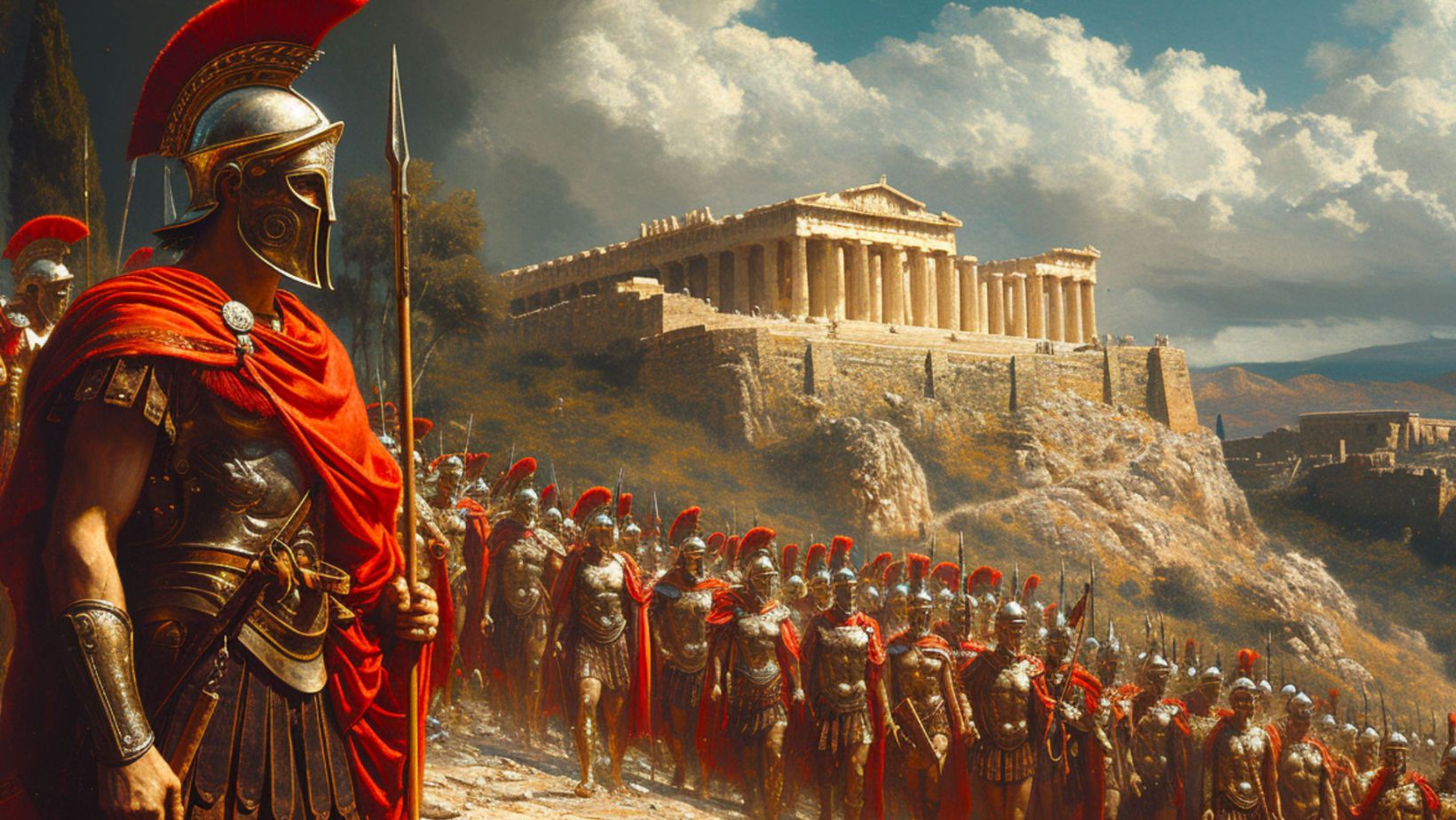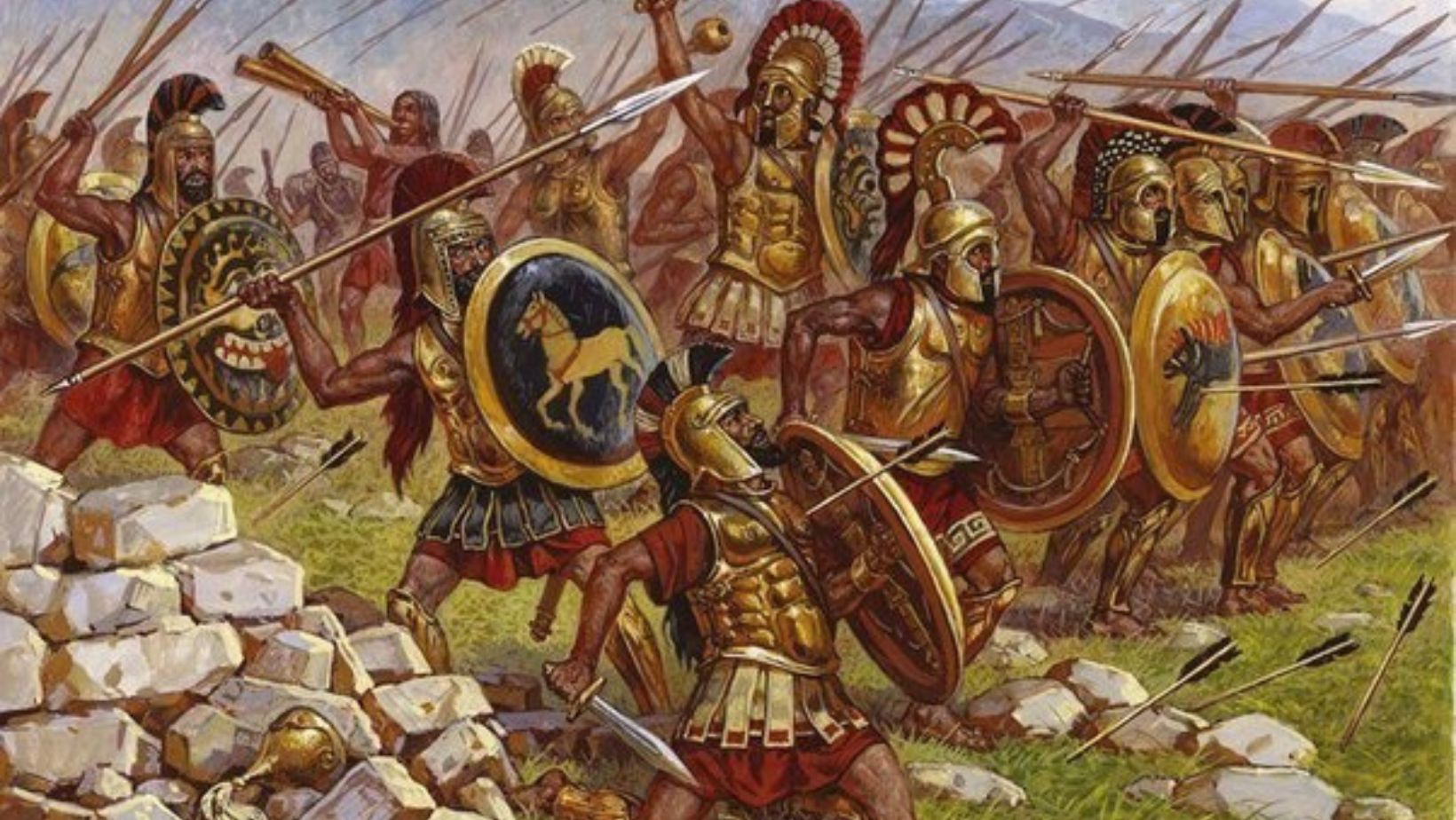Have you ever considered the partnerships that have really left their mark on history? When we look back at the Delian League Significance, it’s like diving into a playbook of ancient tactics and team-ups that show us how people back then mastered the art of sticking together for strength and navigating through power plays. Formed in 478 BCE as a coalition against Persian aggression, this league marked an era where cooperation among city-states was beneficial and crucial for survival. But what made it so pivotal? Digging into the stories of the past, you’ll see how this partnership did way more than just tip the scales in battles—it actually wove together cultural connections and reshaped how political lines were drawn all over Greece.
Table of Contents:
- The Formation and Purpose of the Delian League
- Athens’ Rise to Power Within the League
- The Transformation from Alliance to Empire
- The Decline and Fall of the Delian League
- Conclusion
The Formation and Purpose of the Delian League: Delian League Significance

The Delian League was a defense pact that turned Athens into a powerful empire and ushered in a golden age for the city. After the second attempt by the Persians to conquer Greece, it was clear that more defensive political structures needed to exist to guarantee an effective counter to the still mighty Persian Empire.
Formed in 478 B.C., the Delian League was an alliance of mainly coastal and Aegean city-states against Persia at a time when Greece feared Persia might attack again. Its goal was to make Persia pay and to free the Greeks under Persian rule.
Mutual Protection Against Persian Aggression
The Persian Wars led to the rise of Athens as the head of the Delian League.
In the course of doing so, Athens enrolled all the island states and some mainland states into the alliance called the Delian League – so named because its treasury was kept on the sacred island of Delos.
Ensuring Freedom for Greek City-States: Delian League Significance
The league was used as a defense against possible revenge attacks from Persia following the Greek victories at Marathon, Salamis, and Plataea in the early 5th century BCE. Its purpose was to liberate eastern Greek cities from Persian rule.
Some speculate that Sparta was unconvinced of the Delian League’s ability to secure long-term security for Asian Greeks. The Spartan withdrawal from the league allowed Athens to establish unchallenged naval and commercial power within the Hellenic world.
Establishing Athenian Leadership
The Delian League became so dominated by Athens that it eventually became known as the Athenian Empire. No single event or year can pinpoint when the Delian League became the Athenian Empire.
The process occurred over several years. However, some major events highlighted Athens’s increasing dominance over the other member states.
Athens’ Rise to Power Within the League: Delian League Significance
The alliance of over 300 cities within the League would eventually be so dominated by Athens that, in effect, it evolved into the Athenian empire. Athens became increasingly more aggressive in its control of the alliance and, on occasion, constrained membership by military force and compelled continued tribute, which was in the form of money, ships, or materials.
Relocating the Treasury to Athens
The name Delian League is modern; ancient sources refer to it as simply “the alliance” (synechia) or “Athens and its allies.” The name is appropriate because the alliance’s treasury was located on the sacred island of Delos in the Cyclades.
However, in 454 BCE, Athens used the excuse of a failed league expedition in Egypt to move the league treasury to Athens, which gave them even more control over the league’s finances and operations.
Enforcing Membership and Tribute: Delian League Significance
The Delian League was originally intended to be a voluntary association of city-states. At its height, 330 different city-states were members.
However, Athens became increasingly aggressive in enforcing membership and tribute payments. City-states that tried to leave the league or failed to pay tribute were often met with Athenian military force.
Building a Formidable Navy
Each state contributed ships and soldiers to the league’s defense. The league had a common goal: to share resources and military knowledge to protect each other from Persian aggression.
Under Athenian leadership, the Delian League built a formidable navy that allowed it to project power across the Aegean.
Pericles’ Influence and Building Projects
The Athenian statesman Pericles played a key role in transforming the Delian League into an Athenian empire. Under his leadership, Athens used league funds for ambitious building projects like the Parthenon.
As Pericles himself noted, Athens’ control of the league had turned the city “into a sort of tyrant”.
The Transformation from Alliance to Empire: Delian League Significance
It appeared that Athens was gradually turning the Delian League into their own personal empire. The league’s policies and activities became increasingly focused on what the city of Athens wanted rather than the collective good of all members.
Suppressing Rebellions and Enforcing Loyalty
As Athens tightened its grip on the league, several member states attempted to rebel or secede. The island of Naxos was the first to try to leave the league around 471 BCE, but Athens responded with military force, besieging the island until it surrendered.
Other rebellions followed on the islands of Thasos and Samos, but each time, Athens brutally suppressed the uprisings, forcing the rebels to tear down their walls, surrender their fleets, and pay tribute and fines.
Expanding Athenian Influence: Delian League Significance
Athens also used the League to expand its own power and influence.
One notable example was Athens’ intervention in a dispute between Samos and Miletus in 440 BCE. Athens sided with Miletus and used the conflict as a pretext to install a democratic government in Samos, effectively turning the island into an Athenian satellite.
Conflicts with Sparta and the Peloponnesian League
Athens’ growing power and influence eventually brought it into conflict with Sparta and the Peloponnesian League. Sparta had long been wary of Athens’ dominance of the Delian League, seeing it as a threat to their own position in Greece.
Tensions finally boiled over in 431 BCE, leading to the outbreak of the Peloponnesian War. The war pitted Athens and the Delian League against Sparta and its allies in a struggle for supremacy over Greece. It would prove to be a long and devastating conflict that reshaped the Greek world.
The Decline and Fall of the Delian League: Delian League Significance

The war had taken a heavy toll on Athens, draining its resources and weakening its grip on the league.
The Peloponnesian War and Athens’ Defeat
The Peloponnesian War was a turning point for Athens and the Delian League. Athens’ aggressive actions, including the brutal subjugation of Melos in 416 BCE, had turned many neutral states against them.
The war also exposed the weaknesses in Athens’ empire. The city’s reliance on tribute from league members and its extended supply lines made it vulnerable to Spartan attack. In 404 BCE, after nearly three decades of fighting, Athens surrendered to Sparta, ending its empire and the Delian League.
Internal Strife and Rebellions: Delian League Significance
The Delian League was beset by internal strife and rebellions even before its final defeat. Many member states chafed under Athenian rule and resented the city’s demands for tribute and obedience.
In 412 BCE, several key members of the league, including Chios, Lesbos, and Euboea, rose in revolt against Athens. Although the Athenians managed to suppress these rebellions, they weakened the city’s position and contributed to its eventual downfall.
The Dissolution of the League
After Athens’ surrender in 404 BCE, Sparta and its allies moved quickly to dismantle the Delian League.
Many former league members, freed from Athenian domination, aligned themselves with Sparta or asserted their independence.
Although Athens would later attempt to revive its empire with the formation of the Second Athenian League in 378 BCE, it would never again reach the heights of power it had enjoyed during the 5th century BCE. The fall of the Delian League marked the end of Athens’ golden age and its dominance of the Greek world.
Key Takeaway: Delian League Significance
The Delian League transformed Athens into an empire, sparking a golden age but also leading to its downfall through overreach and conflict.
Conclusion: Delian League Significance
The story of the Delian League isn’t merely about battles fought or treaties signed; it dives deep into how power, liberty, and working together play out in a grand scale. This reminds us how forming alliances can change the game, not just now but way into the future. Through exploring its significance, we’ve seen how unity against common threats forged an era-defining movement—a lesson echoing through ages. Remembering these chapters helps us appreciate not only our past but also guides future collaborations.

